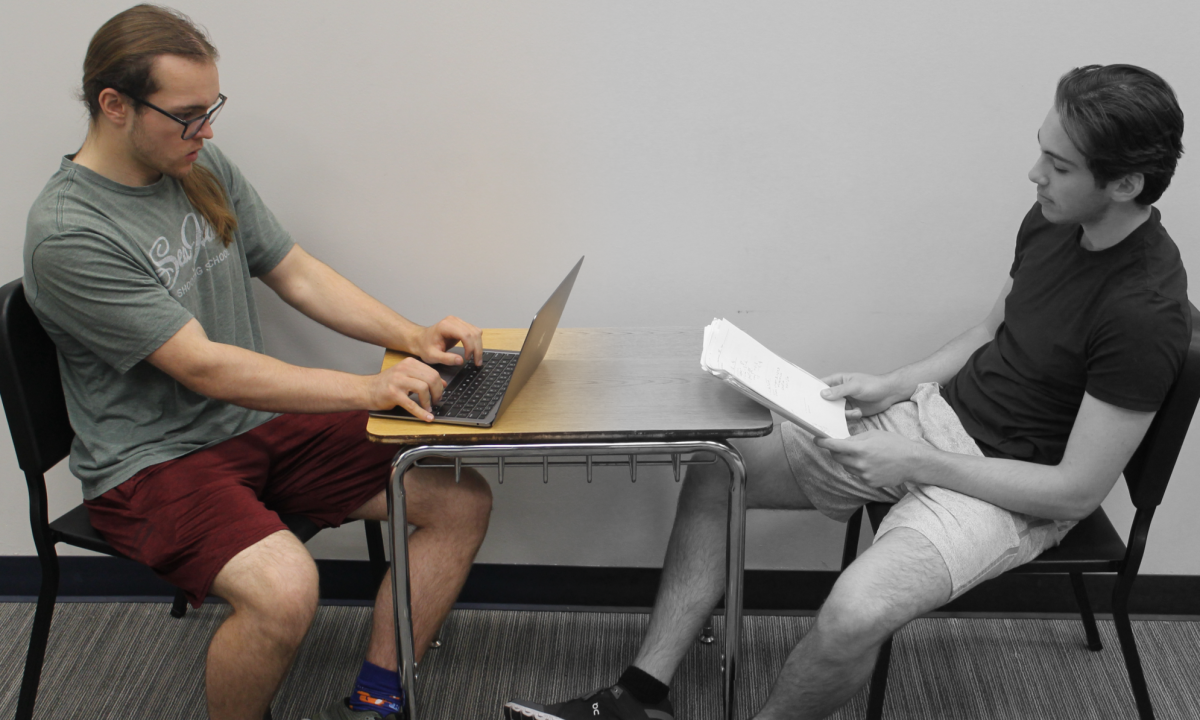Starting this year, when students nationwide sit down in school gymnasiums to take the state-mandated PSAT, they won’t be flipping open their blue testing packets.
Instead, they will be logging into a restricted app on a school chromebook. This experience is no longer a one-size-fits-all. Instead, each test will be adjusted to suit individual students’ abilities.
Starting this fall, College Board is only offering the PSAT online, and beginning in the spring, the SAT will follow suit. Furthermore, the SAT format will also be changed to a shorter, adaptive design.
“The SAT went online for probably a bunch of reasons,” Phillip Bates, content director for test prep organization UWorld, said. “Ultimately it’s good for test security, it saves the College Board money, but most importantly, it keeps the test relevant.”
The proposed capabilities of the online SAT are numerous. Not only is the test quicker to grade, but the adaptive format allows for a personalized testing experience for every student designed to identify their capabilities. In the past, all students received the same standard test booklets. Now, the test adapts in real time in order to gauge a student’s learning level.
“An adaptive test is very cutting edge. [It] is a positive change and it’s just growing with the times,” Bates said.
The SAT adaptive format will begin by showing all test-takers a module of 25 questions of mixed difficulties. Depending on how the student performs on these first questions, they will then be directed to a second module of varying difficulty levels; students who are directed to easier modules will be unable to gain full points.
“[The test is] scored differently now because it’s an adaptive test,” Bates said. “[College Board has] to do a bunch of work to calibrate the test to make sure it works.”
Not only are the questions now dependent on prior performance, but each individual one is also more important because the test has been shortened by one third. The entire test now lasts two hours.
“The [questions are] definitely gonna be weighted differently because of a fewer number of questions,” Bates said.
Reactions from students have been mixed, but Koch has been trying to focus on the advantages.
“I generally like taking tests on paper because I can write things down, but I do think it’s convenient to be able to do things online, especially with seeing the time,” junior Natalie Koch said.
The shift to an online test was also largely an economic choice. An online test is considerably cheaper to produce and distribute, and automatic scoring further cuts down the cost for graders.
Although in the long run this change is set to save College Board considerable amounts of money, the shift has also meant copious amounts of work for those both on and off College Boards payroll.
“The planning starts pretty much immediately after school starts. I set up time on my calendar every week starting probably the second week of school,” Michelle Shumate, assistant principal in charge of PSAT testing, said. “It’s just tedious, not difficult.”
In addition to all the normal challenges that accompany administering formal testing such as displaced students and organizing proctors and test takers, Shumate also had to anticipate the problems the online shift would cause and solve them before they could arise. Of the many problems they planned for, Shumate was most concerned about the internet capacity.
“Making sure that [the internet] was gonna hold up, that was one of the biggest concerns,” Shumate said. “And, making sure that College Board had done everything on their end to make sure the testing app worked on the [PSAT] day.”
After several problems taking online AP tests through the College Board system last spring, students and administrators alike had concerns with the practical issues of taking the PSAT online.
“I was a little nervous [because] I heard about lots of people having problems [with AP tests],” Koch said. “This one went pretty well so I’m guessing they worked on the Blue Book app a lot.”
Concern over the internet’s capacity eventually led to sophomores and juniors taking the PSAT on different days. This was a change from previous years.
“That was one of the first decisions we made, to do it in two days to ensure that all of our kids can get on the wifi,'” Shumate said. “College Board gave a range of dates on which schools could test. Previously, they would just give that one national date.”
As for how those two days went, other than a few minor glitches, Shumate and her team could finally breathe a sigh of relief when the “congratulations” message appeared on the final students screen. Shumate credits a portion of this success to the work of both the proctors and students.
“I was very impressed with the students and how well they adapted to the change and the test,” Shumate said. “As well as how they came in and just asked the questions and did the work.”




